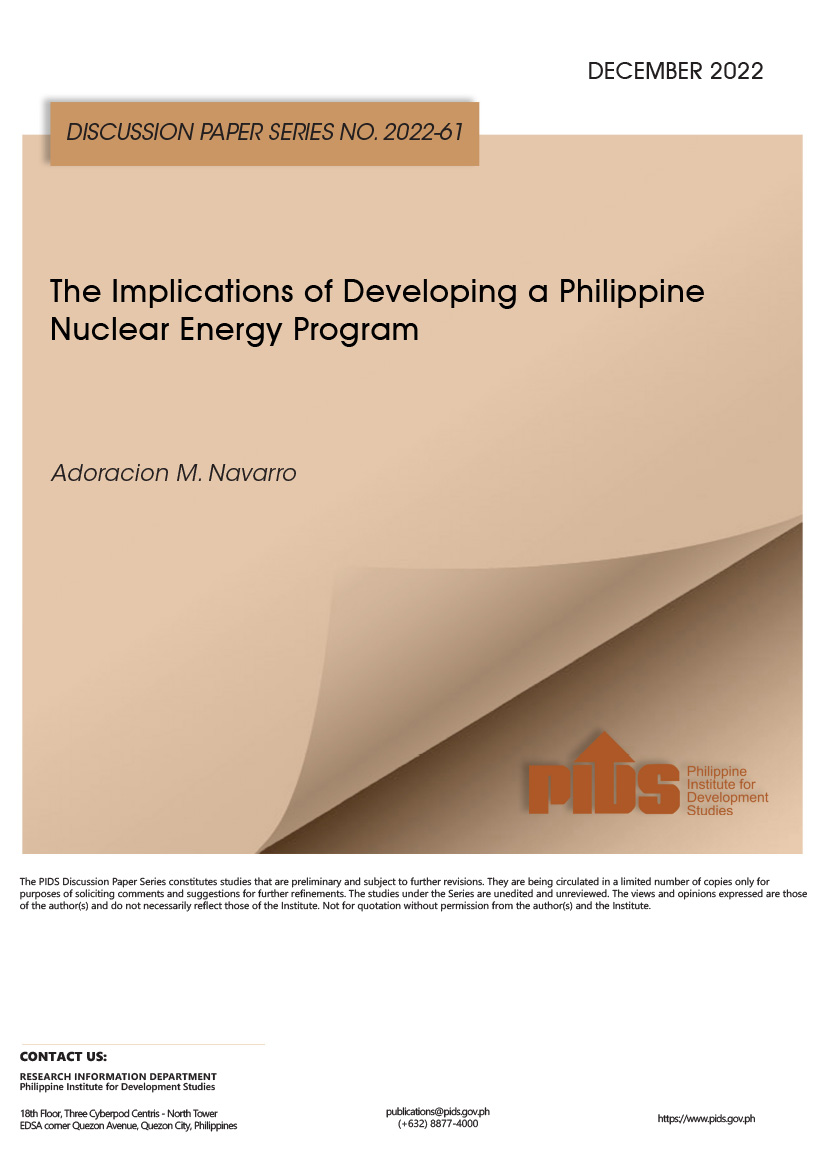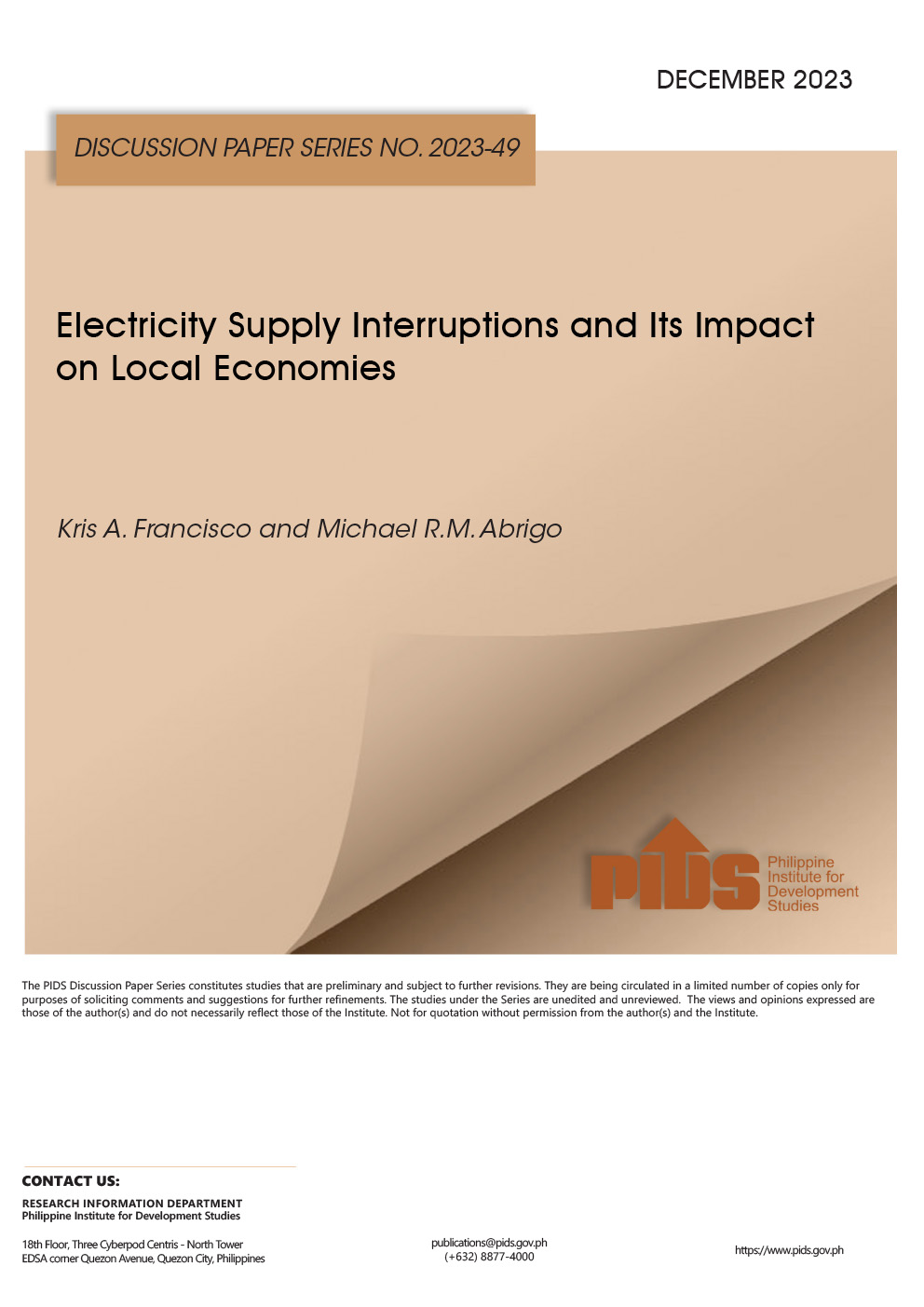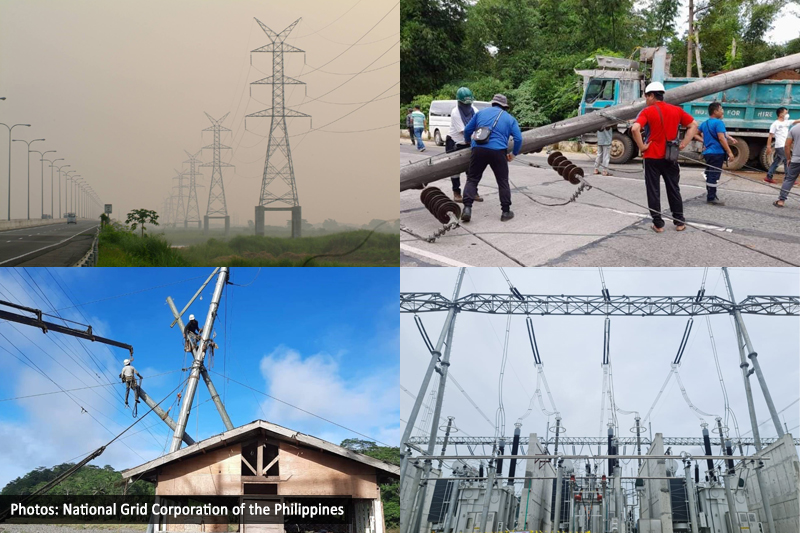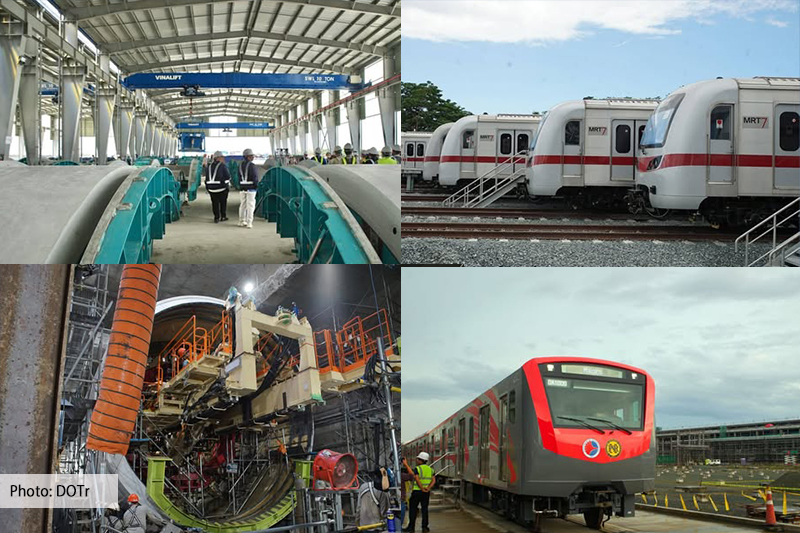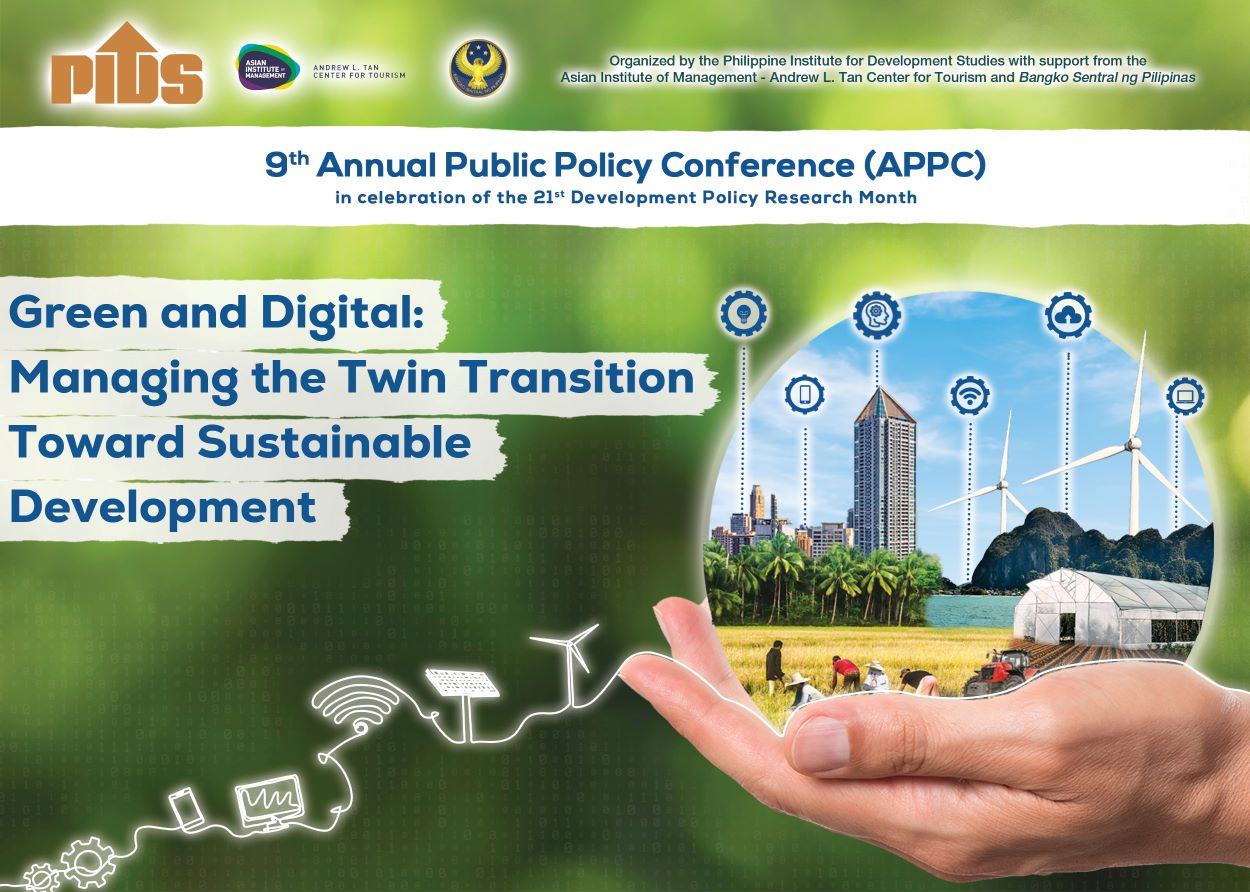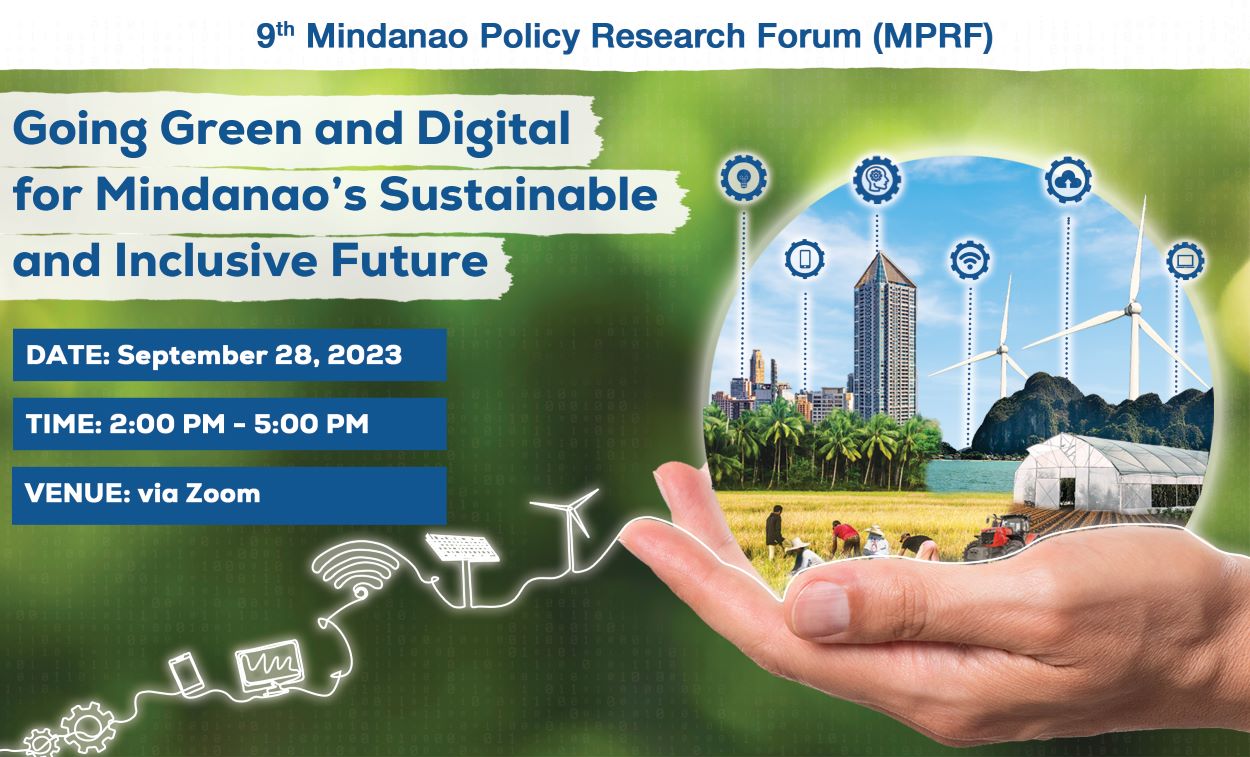
A five-hour power outage in the Philippines inflicts about PHP 556 million in economic losses. If not resolved, the country stands to lose more as the energy sector continues to face problems such as insufficient power supply, congested transmission lines, and recurring damages from disasters, according to energy experts in a recent webinar organized by the Philippine Institute for Development Studies (PIDS).
The webinar featured the studies “Electricity Supply Interruptions in the Philippines: Characteristics, Trends, Causes” by PIDS Research Fellow Kris Francisco and “The Implications of Developing a Philippine Nuclear Energy Program” by Senior Research Fellow Adoracion Navarro.
Anne Estorco Montelibano, president of the Philippine Independent Power Producers Association, Inc. (PIPPA) and a webinar discussant, said the economic consequences of a power interruption is measured by the value of lost load (VoLL) or “the monetary indicator expressing the costs of interruption of electricity supply on a macro level”.
“In 2020, the country’s VoLL was at PHP 20.65 per kilowatt hour (kWh). To put this into perspective, for every five hours of no electricity, our country loses about 500 megawatts, which equates to PHP 556 million in economic losses. It’s a hefty amount to lose for a developing country,” she explained.
Fellow discussant and National Electrification Administration (NEA) Engineering Department Manager Federico Villar Jr. pointed out that the power interruptions reported by electric cooperatives are classified into four: scheduled (maintenance and improvement work), major storms, power provider (generation and transmission problems), and unscheduled (equipment and system failures, human error, fallen trees, and unknown causes).
“We monitor the unscheduled interruptions to measure the electric cooperatives’ annual reliability performance. We also asked the Energy Regulatory Commission to include the reliability standards for all interruptions in our efforts to improve their service further,” he said.
Department of Energy (DOE) Undersecretary Rowena Cristina Guevara, who also served as a webinar discussant, added that insufficient power is a “confluence of several things”, such as supply and system issues and barriers preventing entry of private companies or potential generators.
To mitigate the losses, Montelibano shared that the energy sector can determine the acceptable number of hours of power interruption, known as loss of load expectation (LOLE). The Philippines’ LOLE is 10 days a year, significantly higher than Singapore’s one hour in 10 years.
“If we aim for a LOLE of one day in a year, then our required capacity addition must be at least 1,164 MW of energy to serve 250 hours in a year. Will generators agree to supply, build, and operate that capacity? The short answer is no because we need to address several factors.”
One of these, she specified, is how generators cannot recover the cost from the Wholesale Electricity Spot Market (WESM) alone with the secondary price cap at PHP 6,245/kWh. Generators designated as “Must Run Units”—those required to provide additional energy for the power system’s security and stability—and “Constrained-in Units”—those with limitations that affect its ability to produce electricity—are forced to agree to the market price even if they are operating at a loss.
She added that PIPPA has also repeatedly emphasized the need to address transmission lines issues.
“Our main highways (of electricity) first need to improve, so when they traverse our local grids, energy delivery also improves. From Luzon to Visayas and vice versa, the lines are utterly congested. Undersecretary Guevara has said (before) that without the congestion of the transmission lines, we may see a vast improvement and a decrease in power interruptions,” Montelibano recalled.
Guevara revealed that the DOE is pursuing renewable energy sources to help increase the power supply. “For offshore wind energy, we have 63 approved service contracts. This amounts to 170 percent of the current capacity in the country,” she said.
The department is also considering the development of nuclear energy, a move supported by the Duterte and Marcos administrations.
“DOE is technology-agnostic to potential generators, and nuclear is considered in the energy mix of the future… [But] at the end of the day, we need to listen to our people and address their concerns about nuclear power,” Guevara assured the participants.
Montelibano stressed the need for “a strong energy regulatory and policy framework” to construct and operate nuclear plants. “We must not lose sight of the potential of other technologies to achieve energy stability and security,” she reminded.
Watch the webinar at https://bit.ly/pidsfblive051123 and https://www.youtube.com/watch?v=kbxy2Xln5W8.
For more videos of PIDS events, go to https://pids.gov.ph/videos. ###

